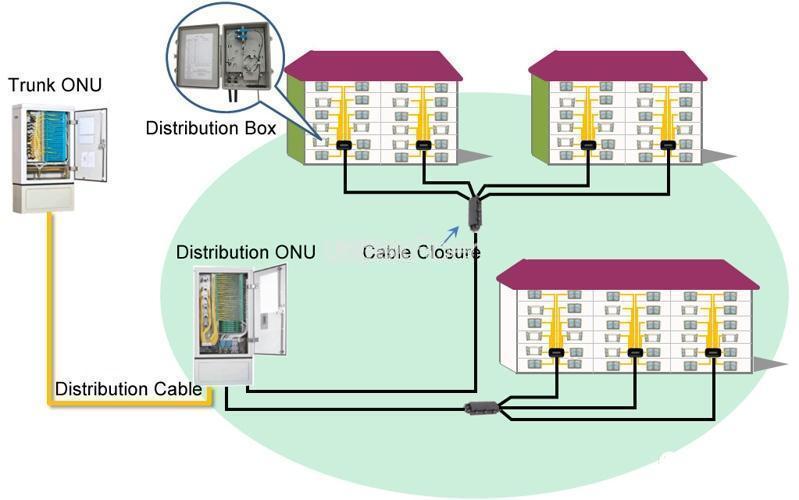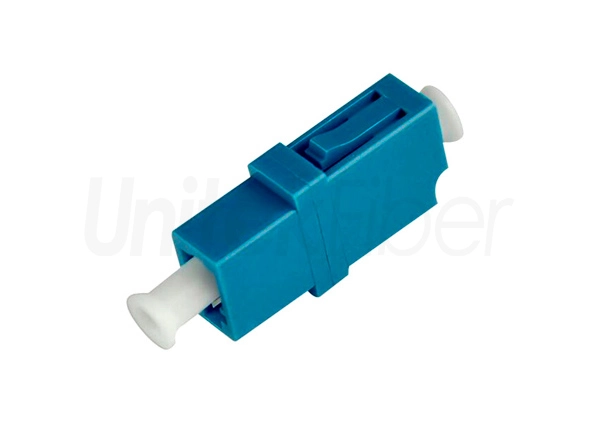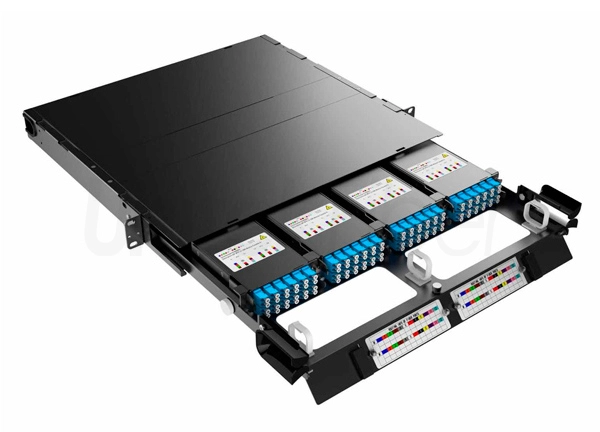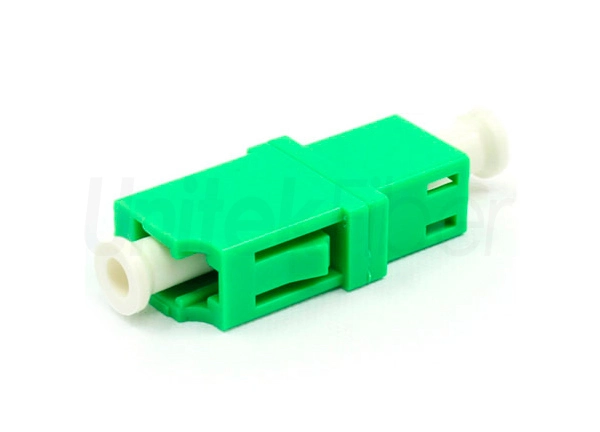
Fiber-to-the-home (FTTH) fiber optic cabling is generally divided into the trunk part, distribution part, the introduction part, and access part from the base station to the user, as shown in Figure 1.

In general, the fiber cable link system will be more secure if the fewer fiber cable segments make out from a fiber cable link. So why is the FTTH cable route divided into so many cable segments?
01
If the fiber link from the base station to the user passes through only one fiber cable segment (not counting the jump optical fiber), that is, each user has a direct cable to the board, as shown in Figure 2. What is the problem?
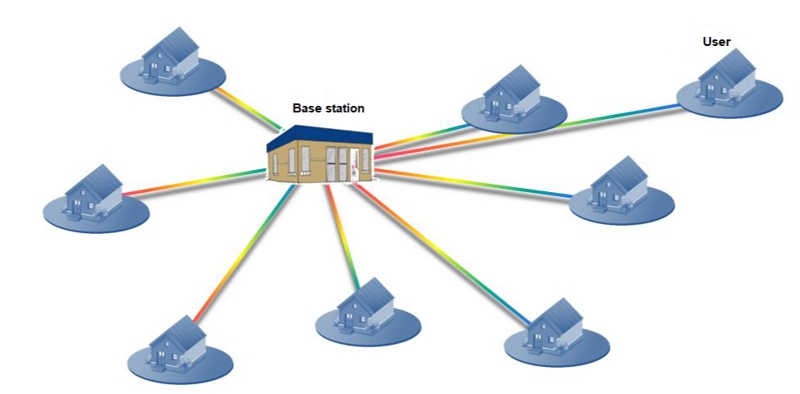
There are two main problems here. (1) The number of fiber optic cable connected to the base station is large, and the number of incoming fiber optic cables that can be tolerated by one base station is limited; (2) The distance for laying the fiber optical cable during installation is long, which is not convenient for installation. Limited by the above two aspects, such a base station can only allow dozens of users to access, and of course, there is no application set.
02
In order to solve the above problems, we made 2 improvements, as shown in Figure 3:
(1) The fiber optical cable is out of the way with a large-core fiber optical cable, and then the fiber cable splice closure is divided into a plurality of small-core optical cable. It should be noted that if a fiber optic cable has too many branch points, it will affect the life and transmission indicators of the cable.
(2) Set the fiber distribution box at the location where the user is concentrated, as the branch point between the project and the loading. When the user puts the device, it is only necessary to put a small cable from the fiber distribution box to the user.
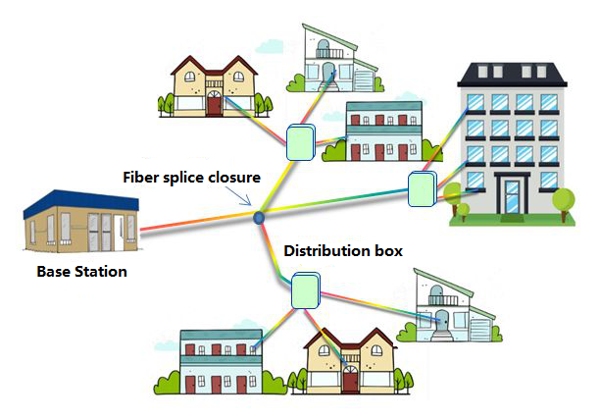
It is estimated that there are 10 fiber optical cable in one office, 6 to 12 fiber distribution boxes in each optical cable, and 8 users in each fiber distribution box. The number of service users in one office is 480 to 960. At this point, the fiber optic cable line from the office to the user has become two cable segments: Base station - distribution box, distribution box- user. Since the connection relationship of the optical fiber is fixed at the optical cable splice closure, and the attenuation is small, the cable splice closure is generally not used as the starting point of the segment.
Compared with Figure 1, the number of service users in the office in Figure 2 has increased several times, but the capacity is still too small. In addition, the user's development is dynamic. If a location needs to add a fiber distribution box, it needs to be re-laying fiber cables from the base station.
03
As can be seen from the comparison of Fig. 3 and Fig. 2, from the perspective of reducing the number of outgoing optical cables and facilitating the loading, the capacity of the lifting station can be realized by adding branch points on the optical cable. There are two types of fiber optic cable branch points: fiber cable distribution box and fiber optical splice closure.
Through the optical cable distribution, one optical cable can be divided into multiple optical cables, and the number of different branches can be mainly limited by the laying conditions of the optical cable; the connection relationship between the optical cables is flexible. But it will increase the loss of active connections and make core management more difficult.
The number of cables that can be branched through the fiber spice closure is small, generally no more than 6 (1 into 5). There are generally cables left on both sides of the fiber splice box. If there are more cables in a splice closure box, the cable will appear messy and unsightly. Therefore, in general, the number of fiber splice closure to divergent fiber cables will be controlled within 4 (1 into 3).
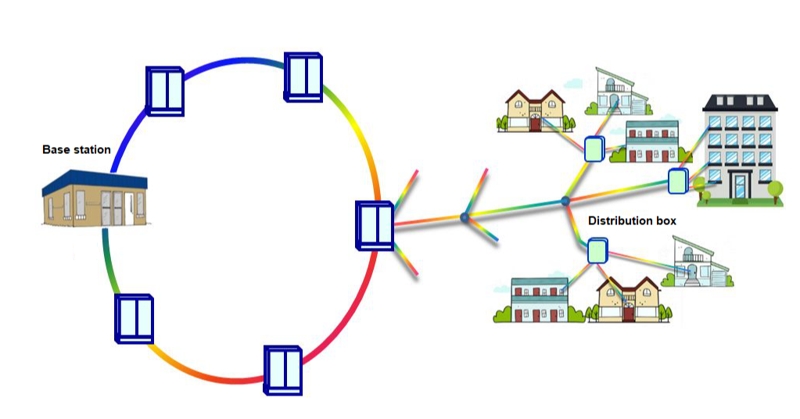
By adding a fiber cable distribution box as fig. 5 shows, the number of service users in a distribution box is 480 to 960, and the number of service users in one transfer box is 8 to 12, and 6 to 12 fiber feeders are placed in each of the fiber-optic cables.
So how many fiber cable branches can a base station set? With 10 optical cables out of one base station and 3 optical connections per optical cable, 30 optical connections can be set. In this way, the capacity of a base station is about 14400-28800; such a large capacity can basically meet the needs of a large number of field.
The construction of the project will be limited by the construction conditions. For example, if the fiber optical cable network is to cover a residential area, the optical communication is preferably set in the residential area. However, when constructing a backbone optical cable base station, most of the residential properties will not be allowed to be constructed in their communities. When the market department and a certain community negotiated the conditions for engineering construction, the backbone optical cable project has already been completed.
The demand for engineering construction in residential areas, commercial buildings, and other cluster markets in the city are uncertain, and the construction of trunk optical cables must be completed within a certain period of time (generally within 2 to 3 months). In order to solve this contradiction, in the construction of the backbone optical cable, the trunk ONU is placed in a location close to the potential user group, convenient for the cable to be laid, and the installation conditions.
When there are construction conditions in residential quarters, commercial buildings, and other cluster markets, installing distribution ONU and wiring fiber cables from trunk ONU to distribution ONU as shown in Figure 6. Thus, the optical cable line from the base station to the user is divided into the following: the trunk section, the wiring section, the lead-in section, and the home section.
